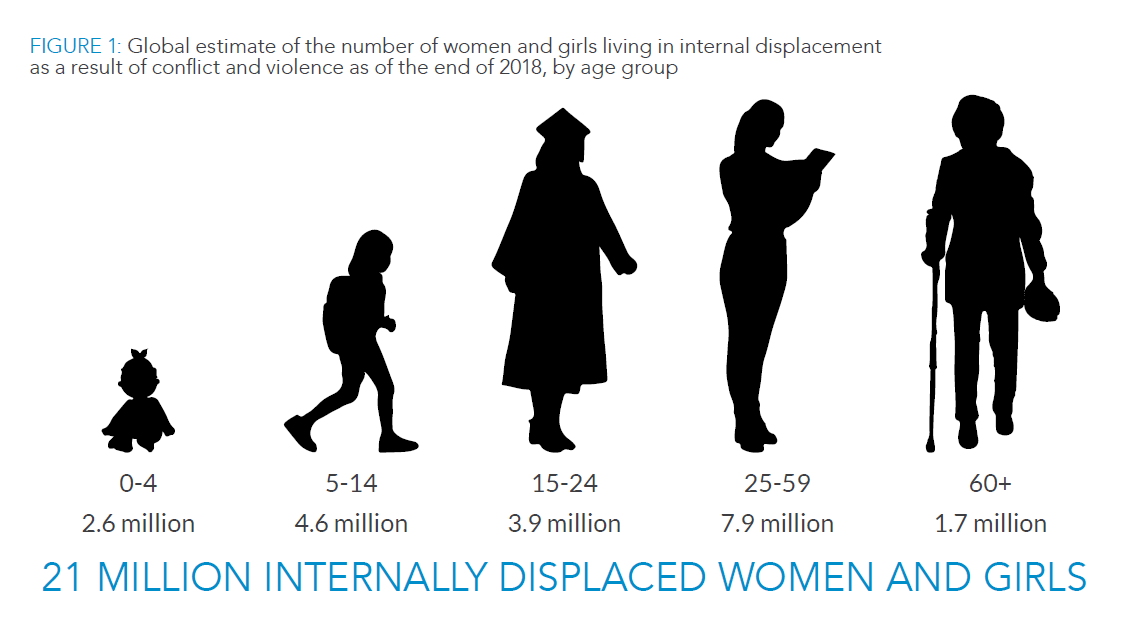December 2020
By Christelle Cazabat, International Displacement Monitoring Centre (IDMC)
This report presents the first global, regional and national estimates of the number of women and girls living in a situation of internal displacement as a result of conflict and violence. Internal displacement situations associated with disasters are also discussed. The key figures are complemented with an overview of the most commonly reported impacts of displacement on women and girls, drawing on existing literature and original data collection and analysis.
More than 41 million people worldwide were living in a situation of internal displacement at the end of 2018 as a result of conflict and violence. More than half, or nearly 21 million, were women and girls. These figures would be much higher if those displaced by disasters and climate change were included.
There were at least 2.6 million internally displaced girls under five, 4.6 million between five and 14, 3.9 million between 15 and 24, 7.9 million between 25 and 59, and 1.7 million women over 60. At the regional level, sub-Saharan Africa had the highest number of internally displaced women and girls, accounting for 8.2 million or 40 per cent of the global figure. The Middle East and North Africa had 5.5 million, the Americas 3.4 million, South Asia 1.8 million, Europe and Central Asia 1.5 million and East Asia and the Pacific 400,000.

There were nine countries with more than a million internally displaced women and girls as of the end of 2018: Syria, Colombia, the Democratic Republic of the Congo, Somalia, Afghanistan, Yemen, Nigeria, Ethiopia and Sudan. Estimates for 48 countries disaggregated by age group are presented in the annex to this report. Knowing how many women and girls are displaced, how old they are and the conditions they live in is essential if they are to be provided with the right resources to meet their specific needs. Displacement reinforces pre-existing discrimination and socioeconomic disadvantages.
Women often face greater challenges than men in securing a decent livelihood in displacement, with repercussions on their ability to find shelter and security and to access education and healthcare. They also tend to be less able to make their voices heard or participate in decisions on matters that affect them. They are often more likely to flee in the face of conflict, violence, disasters and climate change, and are therefore at greater risk of displacement.
Displaced women and girls require tailored support and protection to ensure their safety and ability to exercise their rights. The normative framework relevant to their situation is fairly comprehensive, but implementation lags far behind in many countries. Better data and analysis can help to improve policies and programmes, but if this does not lead to concrete responses backed by sufficient funds, the impacts of displacement on women's and girls' lives will remain unaddressed.
The 2030 Agenda for Sustainable Development is the first international framework to acknowledge that internal displacement is a development as well as a humanitarian concern. Its goals will, however, not be achieved by 2030 unless the phenomenon as a whole and the plight of displaced women and girls in particular receive greater attention. This includes ensuring they are able to achieve durable solutions to their displacement, through investments and interventions that focus on gender equality from humanitarian and development stakeholders alike.
Download the report at:
https://www.internal-displacement.org/publications/women-and-girls-in-internal-displacement
